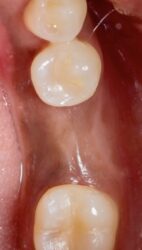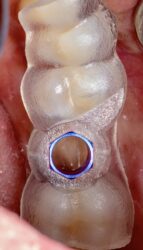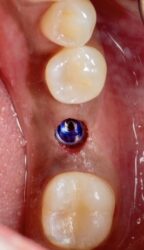-
87madrigal posted an update
Posterior implant placement with a surgical guide: a case that highlighted the value of precision, even in favorable conditions.
This patient had abundant posterior bone, which made planning and execution straightforward but no less important. Here are the lessons reinforced during this case:
1. Guided Surgery Refines Precision: Even with ample bone, using a guide ensured the implant was placed exactly as planned, optimizing angulation and depth for long-term success.
2. Efficient Workflow: The pre-planned guide eliminated unnecessary adjustments during surgery, reducing chair time and improving the overall experience.
3. Consistency in Outcomes: Guided surgery provides a predictable and reproducible process, which is key for building confidence and delivering excellent results, regardless of case complexity.
This case reminded me that even in ideal circumstances, guided surgery elevates precision and consistency.
How do you approach posterior cases with plenty of bone? Do you still use guides, or do you reserve them for more challenging scenarios? Let’s exchange ideas!
Ivan, jostanger and 2 others4 Comments-
Very clean work and great documentation. 👊
-
I usually save guides for more “tricky” cases. But I also don’t have the best workflow at my office on getting them since the previous docs never did guided. I think I’ll be incorporating more as time goes.
-
@jostanger
I get my surgical guides from: https://www.digi3dworks.com/. Barry is the guy who makes them. Super simple process. Upload CBCT, and STL files. You can even send them directly from your IO scanner software if you get it set up. He will get back to you with a video review of the planned placement and wait for your feedback or approval before proceeding to print the guide and ship it to you. Different options for sleeves, sleeveless, material, tooth vs tissue supported. May be worth looking into if you’re trying to find a good process.
-
-
Nicely done, did you put a healing abutment on after insertion?
-





